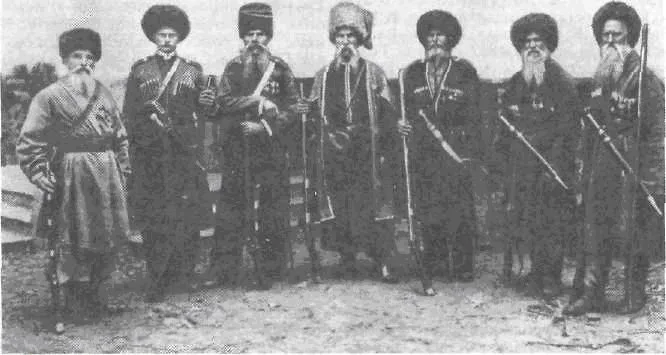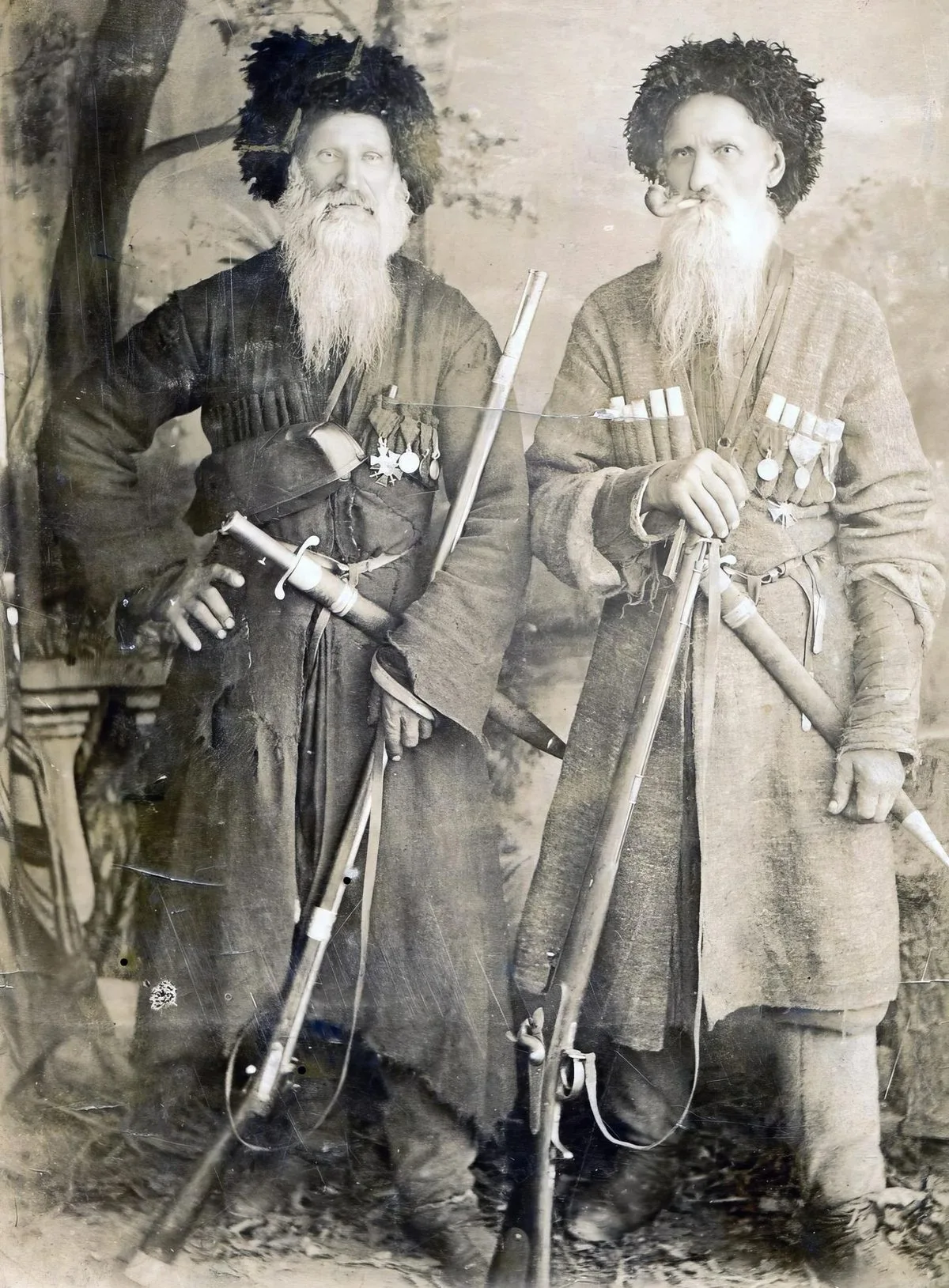
Who were the cossacks? Shot answer: The Cossacks were a semi-nomadic, warrior society in Eastern Europe ⚔️🇺🇦 known for their fierce independence, skilled horsemanship, and distinct culture.
Who were the cossacks and what did they do:
- Defended themselves and their land from rivals like the Ottoman Empire and the Crimean Khanate.
- Formed alliances with European powers like Poland and Russia, playing a crucial role in their expansion.
- Engaged in hunting, raiding, and later, trade and agriculture to sustain themselves.
History of the cossacks – basic facts

History of the Cossacks: A Glimpse into a Warrior Culture
The History of the Cossacks is a fascinating tale of frontier life, fierce loyalty, and unwavering independence. These semi-nomadic warriors carved their own path across the vast steppes of Eastern Europe, leaving behind a legacy of courage and cultural vibrancy.
Origins in the Wild Steppes:
The exact origin of the Cossacks remains shrouded in some mystery. Theories point to their emergence around the 15th century, likely from diverse groups seeking refuge and freedom in the untamed wilderness. Escaped serfs, restless adventurers, and even remnants of Turkic tribes all contributed to the unique Cossack identity.
Life on the Frontier:
Cossack society thrived on self-governance and a strong military ethos. They organized into autonomous communities called Sichs, governed by elected leaders and bound by a strict code of honor. Life was harsh but rewarding, marked by constant training, hunting, and raiding expeditions against their rivals, particularly the Ottoman Empire and the Crimean Khanate.
Masters of the Cavalry:
The Cossacks were renowned for their mastery of horsemanship and cavalry warfare. Their swift, mobile tactics proved highly effective in the open terrain, often outmaneuvering larger, slower armies. Their signature weapons, the saber (shashka) and the lance, became symbols of their martial prowess.
From Guardians to Allies:
Over time, the Cossacks forged alliances with various European powers, including the Polish-Lithuanian Commonwealth and, later, the Tsardom of Russia. They played a crucial role in defending these empires against external threats and expanding their territories through exploration and conquest.
Legacy in Song and Spirit:
Despite facing assimilation and suppression under later Russian rule, the Cossack spirit endures. Their vibrant culture, characterized by their unique music, dance, and folklore, continues to captivate audiences worldwide. The legacy of the Cossacks lives on in historical accounts, museums, and even modern military units that preserve their traditions.
Exploring the History of the Cossacks:
If you’re interested in delving deeper into the rich tapestry of Cossack history, here are some resources to get you started:
- Museums: The National Museum of the History of Ukraine in Kyiv and the State Hermitage Museum in St. Petersburg house extensive collections of Cossack artifacts and artwork.
- Literature: Novels like Nikolai Gogol’s “Taras Bulba” and Leo Tolstoy’s “War and Peace” offer fictionalized portrayals of Cossack life and culture.
- Documentaries: Several documentaries explore the history and traditions of the Cossacks, such as “Cossacks: Warriors of the Wild Frontier” and “The Last Sich: The Ukrainian Cossacks.”
Unveiling the History of the Cossacks is a journey into a world of adventure, resilience, and cultural richness. So, saddle up and explore the legacy of these remarkable warriors who left their indelible mark on the steppes of Eastern Europe.
Branches of the Cossack group
The Cossacks, a semi-nomadic warrior society in Eastern Europe, were not a monolithic group. They were divided into several branches, each with its own distinct characteristics and historical trajectory. Here are some of the major branches:
Zaporozhian Cossacks
- Lived in the Dnieper River basin in what is now southern Ukraine, establishing their autonomous stronghold called the Sich.
- Known for their fierce independence and rebellious spirit, often clashing with Polish and Russian authorities.
- Played a significant role in shaping Ukrainian national identity and folklore.
Photo Cossacks in Mykolaiv (Ukraine)

Horsemen of the 7th Don Cossack Ataman Denisov Regiment, who quartered in Mykolaiv until 1914
Origins and Autonomy:
- Emerged in the 16th century from diverse groups seeking freedom and escape from serfdom, including runaway peasants, adventurers, and even remnants of Turkic tribes.
- Established their own self-governing community called the Sich, a fortified island on the Dnieper River that served as their political and military center.
- Elected leaders known as Hetmans governed the Sich, upholding a strict code of honor and fiercely protecting their autonomy from Polish and later Russian authorities.
Martial Prowess and Warfare:
- Renowned for their mastery of cavalry warfare, employing swift tactics and skilled horsemanship to outmaneuver larger armies.
- Their signature weapons included the saber (shashka) and the lance, making them formidable opponents in open terrain.
- Played a crucial role in defending the southern border of the Polish-Lithuanian Commonwealth and later the Russian Empire against Ottoman and Crimean Tatar threats.
Unique Cossack Culture and Traditions:
- Developed a distinct and vibrant culture, characterized by:
- Music: Energetic folk songs and dances like the hopak, often accompanied by instruments like the bandura and the lute.
- Art: Decorative metalwork, colorful clothing, and storytelling traditions featuring heroes like Taras Bulba.
- Religious life: Orthodox Christians with a blend of pagan beliefs and rituals.
- Social structure: Egalitarian society with limited social hierarchy, valuing individual prowess and bravery.
Legacy and Historical Impact:
- Played a significant role in shaping Ukrainian national identity and culture, their spirit of independence and resilience becoming enduring symbols.
- Influenced the development of modern Ukrainian language and literature.
- Though the Sich was eventually destroyed by the Russian Empire in 1775, their legacy continues to inspire national pride and cultural revival efforts in Ukraine.
Interesting Tidbits:
- The Zaporozhian Cossacks were known for their distinctive hairstyle, the oseledets, a shaved head with a long lock of hair left at the crown.
- They often adorned themselves with elaborate mustaches and colorful clothing.
- Their reputation for drinking and revelry inspired artists and writers for centuries.
The Zaporozhian Cossacks were a remarkable group whose story is intertwined with the history and folklore of Ukraine. Their legacy of courage, independence, and vibrant culture continues to captivate and inspire generations to this day.
Reply of the Zaporozhian Cossacks

The Reply of the Zaporozhian Cossacks was a famously colorful and vulgar response to an ultimatum sent by the Ottoman Sultan Mehmed IV in 1676.
Imagine this: A band of fierce warriors, renowned for their sharp wit and unfiltered language, receiving a stern message demanding surrender. Their reply? A masterpiece of creative insults and hilarious mockery, dripping with Cossack swagger.
The letter, allegedly penned by the Cossack leader Ivan Sirko, is packed with bawdy humor, outrageous comparisons, and enough profanity to make a sailor blush. It mocks the Sultan’s threats, questions his manhood, and even throws in some anatomical humor for good measure.
While the historical accuracy of the letter is debated, its cultural impact is undeniable. It became a symbol of Cossack defiance and humor, showcasing their fearless spirit and love of a good laugh in the face of danger.
Think of it as: A giant middle finger, hilariously disguised as a letter, sent to a powerful enemy. The Cossacks weren’t just brave warriors; they were masters of verbal warfare too!
Of course, the language used in the Reply is not suitable for polite conversation. But its historical significance and sheer audacity make it a fascinating glimpse into Cossack culture and their unique way of dealing with threats.
So, the next time you face a challenge, remember the spirit of the Zaporozhian Cossacks: Laugh in the face of danger, unleash your creativity, and don’t be afraid to stand up for what you believe in, even if it means using a few colorful words!
Kuban cossacks – who is it?

The Kuban Cossacks were a branch of the broader Cossack group who inhabited the Kuban region in South Russia, near the Caucasus Mountains. Here’s a quick rundown:
Origins:
- Formed in the late 18th century, primarily from descendants of other Cossack groups (mostly Don and Zaporozhian).
- Settled in the Kuban region by the Russian Empire to defend the border against mountain peoples and the Ottomans.
Way of life:
- Known for their horsemanship, military prowess, and distinctive culture.
- Lived in semi-autonomous communities called “stanytsas” with elected leaders.
- Engaged in agriculture, cattle breeding, and military service for the Tsar.
Historical role:
- Played a crucial role in defending the southern Russian border for centuries.
- Fought in numerous wars, including the Russo-Turkish Wars and the Napoleonic Wars.
- Declared their independence as the Kuban People’s Republic during the Russian Civil War.
- Faced suppression under the Soviet regime but have seen a cultural revival in recent years.
Legacy:
- Contributed significantly to the development of the Kuban region’s culture and traditions.
- Their legacy lives on in folk songs, dances, and equestrian practices.
- Remembered for their fierce independence and military prowess.
In short: The Kuban Cossacks were a distinct group of Cossacks who shaped the history and culture of the Kuban region, known for their military role, strong community spirit, and unique traditions.
Kuban Cossacks-plastuns
Crimean War veterans Prokopii Semak and Marko Sopelniak, Katerynodar, 1896.

Don cossacks

A Cossack from the Don area, 1821, illustration from Fyodor Solntsev, 1869
- Cossack groups, inhabiting the Don River basin in southern Russia.
- Renowned for their horsemanship and cavalry skills, playing a crucial role in defending the southern border of the Russian Empire.
- Developed a unique culture, including distinctive music, dance, and traditions like falconry.
What were the cossacks infamous for?
Feared warriors of the Eastern steppes, the Cossacks were infamous for:
- Fierce cavalry assaults: Skilled horsemen wielding sabers and lances, they dominated open battlefields.
- Frontier guardians: Protecting empires from Ottomans and Tatars, but often clashing with central authority.
- Controversial legacy: While admired for bravery, their brutality towards conquered peoples and involvement in pogroms remain a dark stain.
Video cossacks gopack dance
Video film about Cossacks “Propala Gramota – 1972 – English Subtitles”
In the preparation of the material was used: https://en.wikipedia.org/wiki/Cossacks

3 comments
Rachel
The article provides a good overview of the history and traditions of the Cossacks. However, it could benefit from more in-depth analysis of their cultural impact and legacy in modern times.
Victoria
I found the article about the Cossacks very informative and interesting. It provided a good overview of their history and traditions, and highlighted their role as warriors. I especially liked learning about their unique way of life and strong sense of community.
Jessica
Interesting article about the history and traditions of the Cossacks. I didn’t know much about them before, but now I have a better understanding of their warrior culture.